What is ASET?
ASET (Angular Spectrum Evaluation Tool) was developed by The American Gem Society (AGS) as a means for evaluating a diamond’s interaction with light.
It is the only diamond cut grading tool endorsed by the scientific community, as it critically examines a stones optics by 3-dimensionally evaluating light performance in all 58 facets.
How does ASET work?
First a little background: When light passes through the table of a diamond, it is broken down into a rainbow spectrum of colors. Once in, these colors are temporarily trapped, causing them to bounce around several times from facet to facet, generating sparkle. When the light finally has an opportunity to refract out, it can leave through the table as white light, which is what we see as brilliance; or it can leave as separate rays, which reach our eyes in flashes of color.
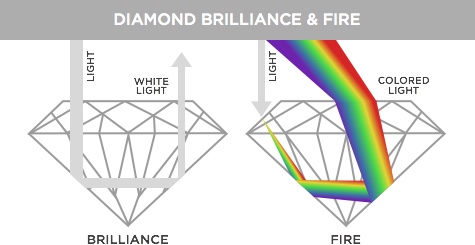
Keeping the physics of light play in mind, ASET generates a color-coded image that identifies the angle from which a diamond is gathering its light, allowing us to see how well or how poorly the diamond is handling the rays.
What colours are used in the coded image?
- Red: Captures the brightest reflected, represents brilliance. (Strikes the diamond from 45 to 75 degrees to the table)
- Green: Captures light that is not as bright; reflected off of indirect angles (Strikes diamond from 0 to 45 degrees)
- Blue: Represents contrast; created by light that could have entered the diamond, but was blocked by the observers head (Strikes at 75 to 90 degrees)
- Black/White: Both colors represent leakage- or an area from which light is lost.
Types of ASET images:
There are two types of ASET images:
- Actual images seen through a device: detailed, three-dimensional
- Computer generated images: simplified, idealized and two-dimensional
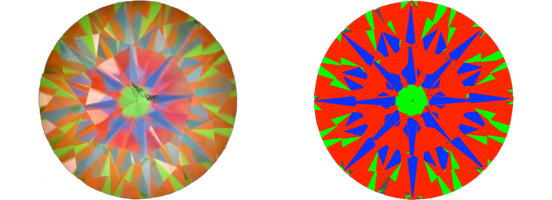
Tips for evaluating a diamond using ASET imagery
Ideally you want to see more red than green in a stone; with the exception of the reflection area in the very center of the stone, which can be red, green or a combo of both.Blue should be distributed in a balanced and symmetrical manner because it shows us the pattern of light and dark areas that makes a stone visually pleasing. Since black and white represent light leakage, you should really see very little of these colors. In fancy stones, expect to see more green.
Using ASET technology to assess a diamond
Advantages of ASET
- Is not limited to round brilliants; it works with all fancies
- The technology works with both loose and mounted diamonds
- Can easily evaluate your inventory and select diamonds based on light performance
- Eliminates any ambiguity regarding a diamond’s cut
- Does not require backlighting to generate a good visual of the stone
Disadvantages of ASET
- Requires more knowledge to decipher what individual colors mean and how they relate to a stone’s optics
Light performance rating
ASET images of stones can be rated on a scale of 0-10
- 0-2 indicates HIGH PERFORMANCE, with 0 limited to being “AGS Ideal”
- 3-7 indicates MEDIUM PERFORMANCE
- 8-10 indicates LOW PERFORMANCE
Presentation vs. handheld ASET
- Presentation: High-grade optics; best visual of light performance in stones
- Handheld: Less exact than the Presentation ASET; small device convenient for travel
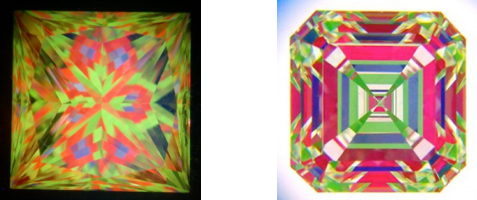
ASET Report
An ASET report should be able to tell you about a stone’s
- Light Performance: Optical Efficiency
- Optical Symmetry
- Physical Symmetry
- The Cutter’s Expertise
A well cut stone will reflect most of the light striking it, appearing bright and beautiful! But a low quality stone leaks most of the light and looks dimmer to the observer.

While not all jewelers will have ASET imagery readily available for all the stones they are selling, if you are in the market for an 8 carat diamond ring then it’s likely that you are consulting with a jeweler who should be able to provide an ASET image for your review.
While an 8 carat diamond may not deliver a perfect ASET image (after all, a lot of the impressiveness comes from the size of the stone!), it is still a worthwhile exercise to ensure that the diamond has been cut with some consideration for cut quality, not just to keep the carat weight as high as possible.
